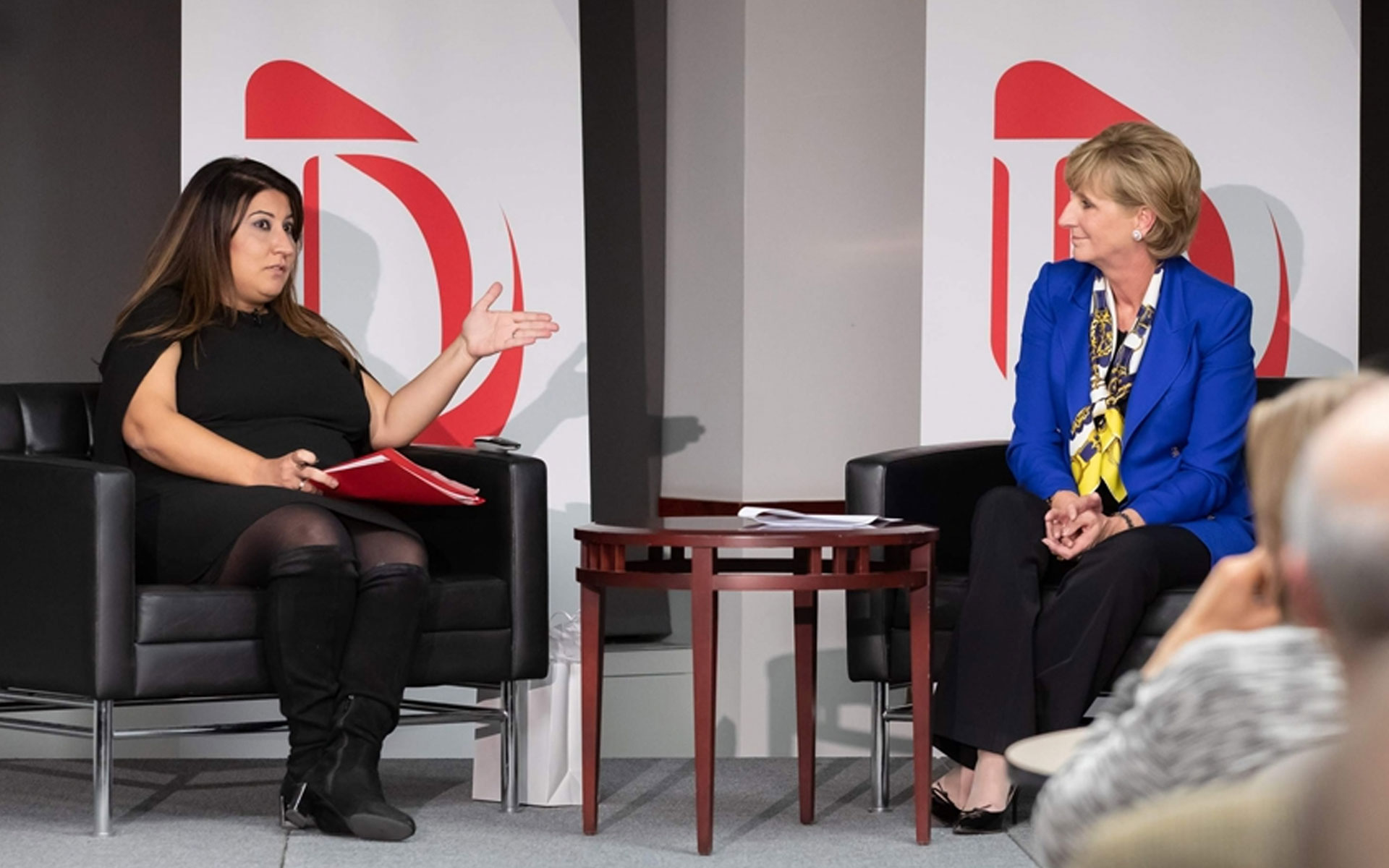At first the operating room appears to be missing its surgeon—in the surgeon’s place, a robot, surgical tools at the ready, towers over the patient. Nurses, anesthesiologists, and technicians work around the robot and patient while residents and fellow doctors encircle a darkened console distanced from the patient in a corner of the room. Here the surgeon sits, peering into a screen, performing the operation with more precision and dexterity than ever before possible.
“One thing you notice immediately when you study a surgical robot is that the entire configuration of the room changes,” says McGill Desautels Faculty of Management Professor Samer Faraj, whose research paper, Losing Touch: An Embodiment Perspective on Coordination in Robotic Surgery, is based on a 25-month field study of the endoscopic da Vinci robot, looking into how the technology reconfigured workplace coordination.
Surgical robotic technology is specialized in design and purpose, yet in practice it illuminates more universal insights into how the introduction of new technologies spurs changes to people’s embodied actions, causing both intended and unexpected impacts. When your workplace is a high-stakes hospital operating room, those changes to movement, workflow, and professional roles require immediate attention and a significant rethinking of coordination.
Bodies in coordinating motion
“The introduction of new technology in organizations is an occasion to rethink how we organize, how we work, and how we coordinate,” says Faraj. “We tend to think of coordination as an element of organizational design, where we design organizations to ensure more interactions or fewer interactions, or to buffer certain parts of the organization. The surgical robot exposed how heavily embodied our coordination is.”
The surgical robot exposed how heavily embodied our coordination is.
An often-overlooked aspect of coordination, an embodiment perspective can help explain how and why coordination evolves following the introduction of a new technology. “If you do not recognize that a lot of coordination is done via our senses, your organization is going to be open to surprises and unexpected results,” Faraj explains.
This becomes more obvious with technologies that augment people’s perceptions or actions at a distance, such as drone flights or robotic surgery, that create “a cyborgian human-machine entanglement.” These technologies change not only the capabilities of a human body, but professional roles, relationships to co-workers, and how everyone carries out their tasks in a given workspace.
To effectively manage the introduction of new technologies, decision makers need to be aware of the potential for disruption, looking beyond the promise of technology to how it performs and evolves in practice.
Initial intentions and unexpected impacts
The technology of robotic surgery initially aimed to improve the process of the surgery, accelerate patient recovery time through smaller incisions, and lead to the development of new surgical techniques. The real-world impact of the technology turned out to be much further reaching.
During robotic surgery, unlike traditional surgery, the surgeon is physically separate from the patient, controlling a specially designed robot that wields surgical tools. Visibility and access to the surgical site is reduced for co-workers and other professionals in the room—people who are there to both work and learn.
“What can be forgotten in this scenario is that the surgeon is part of the team,” explains Faraj. Residents and others who are there to learn surgery move closer to the surgeon’s console and away from the patient. The space they make available becomes occupied by the nurses who take on new surgical intervention tasks that require an upgrade in skills. Meanwhile, the anesthesiologist becomes responsible for the safety of the whole of the patient, not only anesthesia, and must plan for any emergency or intervention, essentially changing the way they work.
Faraj and his co-researchers found that though teams were trained on the new technology, surgeons using the robot still experienced “both an augmentation and a reduction of what they can do with their bodies in terms of haptic, visual, and auditory perception and manipulative dexterity,” while other members of the team experienced coordinative adaptations such as having to reposition themselves, redistribute tasks, work with changes in perception, and find responses to these situational changes.
Over time, these changes resulted in a reconfiguration of roles resulting from expanded occupational knowledge, the emergence of new specializations (such as “robotic surgical nurse”), and shifts in status and boundaries among the team.
Planning for tech, planning for change
Initially, new technologies may be introduced to the workplace to serve specific purposes and goals, such as saving time and money, and their introduction includes training and an outline of expected outcomes. Yet in practice new technologies almost always have unexpected, highly human impacts and outcomes. With its tactile, embodied nature, robotic surgery explicitly illustrates these “second order” effects of new technologies in the workplace.
This raises questions about how other technologies—from digital instrument and Artificial Intelligence applications to rapidly adapted video conferencing tools and, soon enough, augmented reality—are reconceptualizing people’s roles in organizations and throughout the workforce.
In the operating room, a new order of coordination had to emerge that included the robot, says Faraj. Typically, the way many managers conceive of coordination is at an abstract level, such as designing and coordinating units, reporting structures, and knowledge sharing. “Yet coordination is a socio-material achievement,” he points out. “It’s the room, your visibility to others, how your voice is carried, how you know what others need. Much of this is highly implicit and embodied.”
Coordination is a socio-material achievement.
Whether new technology is integrated into an operating room or an office, effective coordination around it is typically based on people reading each other and understanding each other’s needs, understanding where their help is needed, what expertise is required, or what needs to be applied at what moment in time to realize the collective performance, says Faraj.
“For complex work and complex collaboration, you need a real back and forth where knowledge is freely exchanged between participants,” he explains. “A good surgical team, for example, is proactive—they know what’s coming next. It’s like a collective magic.”














